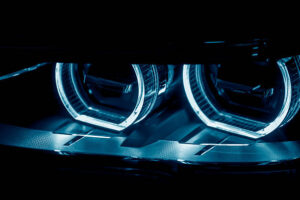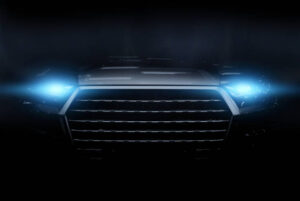Choose Bright Light, not Blindening Beams: the H1 LED Bulb Debate
Wading through forums or having late night discussions with your car enthusiast friends, you will, most certainly, have heard the racket: halogen to light emitting h1 led headlight bulb upgrades are the way to crisper, cooler… and safer drives. However, in all the frenzy there is one very important crossroad; how bright do you really want to be? And why is fiddling with focus so important when you are not interested in dazzling the on-coming driver with what seems like a spotlight?

Even though there is no reason to wait to take advantage of the supernova brightness guaranteed by a pair of H1s, pause before you press that add to cart button on just any pair of headlights that fits the criteria. Let us do some digging and see what level of brightness is actually desired. The more is not necessarily the best as the marketing hype would have it. The raw deal- Straightforward words with tips, tangy moments and facts that count.
Not all glitters turned out to be gold: The Lumens Race
When you type best H1 bulb in Google, you will get varieties of up to ten thousand lumens. Earnestly, others appear to be more fit in a search-and-rescue helicopter than your loyal sedan. Pause, before you have been flattered by those figures, make a check on reality.
Normally, halogen H1 bulbs emit approximately 1,300 to 1,500 lumens. The vast majority of decent LED substitutes are in the 3,000 to 6,000 lumens per bulb range, almost three times the stock halogen. Past this, however, you rapidly reach a whiteout point where light will start working against you–scrambling helmet visions of road, flattening contrast, and making night motorcycle driving a game of guesswork.
As long as you leave it on the brighter side but below 6,000 lumens per bulb, chances are you won’t go wrong. You can see clearer and you will not leave other drivers with their retinas burning.
Beam Focus It is also (All) About
And this is the portion too many neglect: converting to LEDs is not just a question of raw lumens. A great h1 led headlight bulb is of no use when its light is unruly and untamed. That kills your headlights when it comes to glaring at drivers ahead of you–and may earn you a one-way ticket to an inspection failure or bust by the police.
projector housing vs. Reflector Housing
Headlight designs can be of two categories namely reflectors and projectors.
In reflector housings the light is scattered by a mirrored bowl. Found in most, at least of older cars, they are easy to burn out, so long as the bulb is not exactly positioned. Put in a crappily designed LED there and you have light escaping on all sides particularly above cutoff.

In projector housings, the lens is used to concentrate the beam a lot more. These would be more efficient in upgrading to LED, as they will point the lumens where you want them.
In case you own a car with reflectors, then you should seriously consider an LED substitute that will provide the same installation orientation as the old halogen bulb. The users of the projectors are allowed a little margin of error but should always continue on the side of focus and precision.
Oncoming Glare: The Adverse Effect
How about this; put your hand up if you ever have had someone go past you and appear to have a personal sun installed in their headlight housing. It is not pleasant, yes. Glare can be more than a nuisance it can also create a safety problem.
In a study released in 2022 by the AAA, headlight glare is the second most cited driver complaint that causes avoidance of nighttime driving, replacing stray animals as its prominence in the minds of older drivers. What this would mean is that when your upgrades are giving off a laser light show, then you are making more harm than good.
Three Tricks to Take the Proper Concentration (and Glare Go):
Check Vertical Aim: After mounting, park in front of a wall with a distance of some 25 feet. The points at the top of your light beam should land at the lower screen of the headlights.
Check Hotspot Placement: Your beam has a hotspot that is the brightest point of your beam, check that it is centered squarely on the road and not up in the trees.
Realign Often: If the car sags after bump or after running an errand filled with groceries, relevel the headlights to correct it.
Fact Check: Not Always the Safest is the Brightest
This is one piece of information you will not find on a majority of product pages: the more lumens, the more shadows they can produce and also decrease the adaptation of your eyes in low-light situations. One potentially overlooked danger of mega-bright LED swaps is that they can cause you to overdrive your headlights, that is, drive at speeds faster than you can see under any circumstances and react to.
Is it the matter of Legal Compliance? You Bet
In most areas there are regulations concerning the maximum brightness of headlights and cut-off lines. Take the example of the US which has the Federal Moto vehicle safety standard no 108 which governs the law of brightness and beam pattern. In the case of Europe, the ECE Regulation 48 sets things straight by prioritizing appropriate beam cutoff and light distribution.
You do not want to get a fix-it ticket, so be sure of your headlight regulations in your locality prior to the installation of the new H1s.
Tales of the Road (Which Homework You Cannot Miss)
This is a fast story. With the packaging seducing me, my neighbor Helen invested her money on a 12,000-lumen H1 LED set. It was daylight, ” she said, complaining that the car headlights were flashing in her face more or less during two days. That year she passed inspection. With a dial-back to a 4,500-lumen set and a focus adjustment, Helen said the visibility did not elicit honking of the horns to drive home.
Don’t follow the example of Helen and do your research and make specific changes. The install and forget approach can prove to be more expensive than they bargained for; even monetarily.

H1 LEDs Quick Picks: What to Look in H1 LEDs
3,000 to 6,000 lumens per bulb is relatively safe when it comes to achieving good night driving.
Make sure that you choose bulbs whose base collars can be adjusted and which allow you to reduce the hotspot area to produce the minimum glare.
Use the CANbus compatible bulbs so that warning errors on the dashboard can be minimized.
Stay with brands that come with a good guarantee (no one wants a blown bulb after half-a-year).